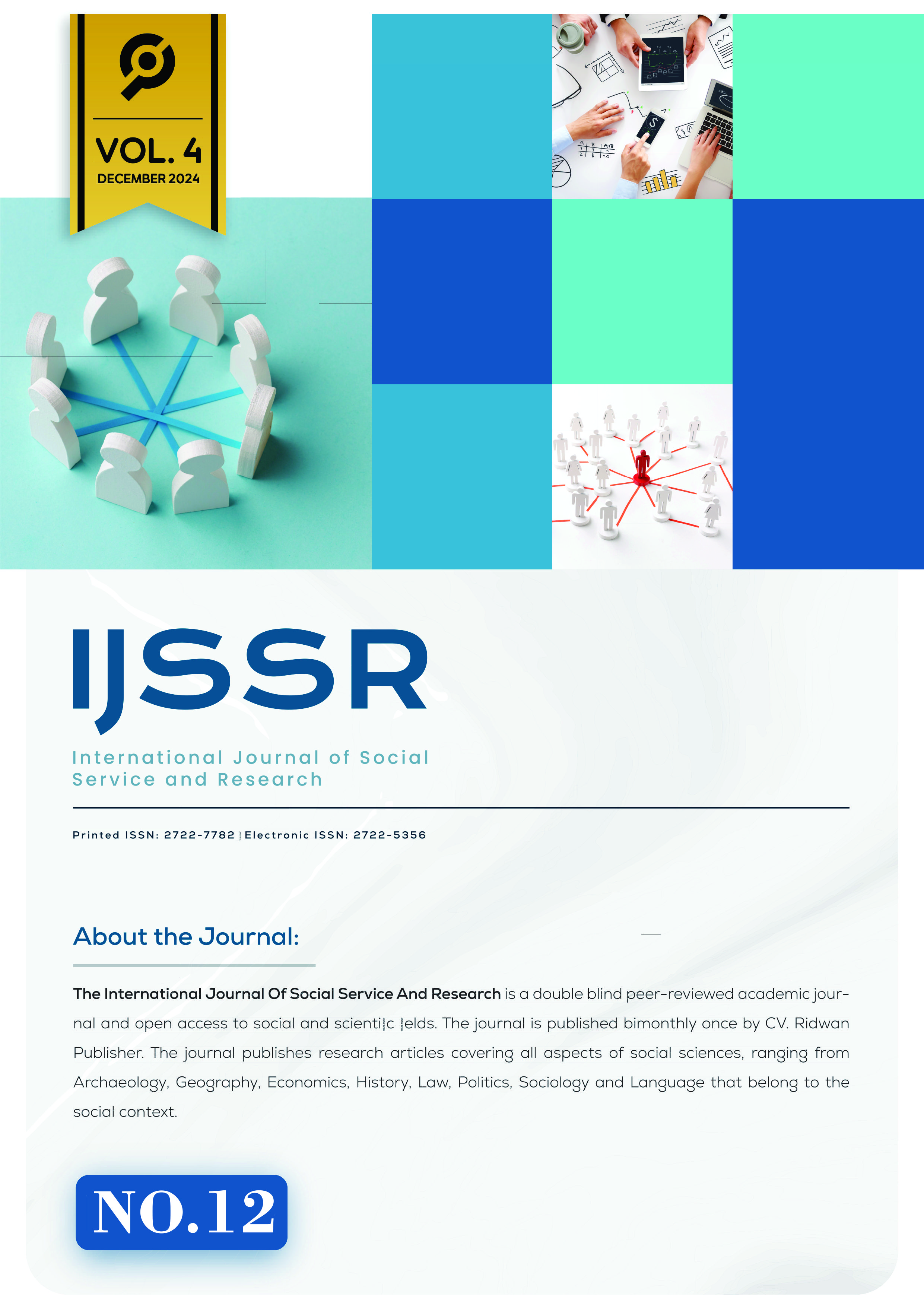IMPLEMENTATION GAP IN PUBLIC-PRIVATE PARTNERSHIP (PPP) FOR INFRASTRUCTURE DEVELOPMENT
DOI:
https://doi.org/10.46799/ijssr.v4i12.1130Keywords:
Infrastructure Development, Public-Private Partnerships (PPP), regulatory reformAbstract
Infrastructure is one of the most important pillars in the development of a civilization, especially for archipelagic countries like Indonesia, which faces unique geographical challenges. The gap in the implementation of Government and Business Entity Cooperation (KPBU) in infrastructure development in Indonesia has become an increasingly pressing issue to address. This research discusses the importance of regulatory renewal in Public-Private Partnerships (PPP) to address existing gaps. The research utilized various data sources, including legislative texts, government regulations, legal documents, and policy papers relevant to PPP in Indonesia. The analytical approach allowed for a deeper exploration of the dynamics and implications of the existing regulations, focusing on their effectiveness and applicability in real-world scenarios. The author was able to articulate the challenges faced in the application of PPP regulations and propose targeted recommendations for regulatory renewal and improvement. This study could involve comparative analyses of best practices in regulatory frameworks from other countries that have successfully addressed similar infrastructure challenges, providing valuable insights for the Indonesian context. Ultimately, this research could contribute to creating a more responsive and adaptive regulatory framework that supports sustainable and equitable infrastructure solutions in Indonesia, ensuring that the needs of society are met while fostering a conducive environment for investment.
References
Asnudin, A. (2009). Pembangunan Infrastruktur Perdesaan Dengan Pelibatan Masyarakat Setempat. Jurnal SMARTek, 7(4).
Baporikar, N. (2016). Infrastructure Development as a Catalyst for Social-Economic Advancement. International Journal of System Dynamics Applications, 5(4). https://doi.org/10.4018/ijsda.2016100106
Jhingan, M. L. (2012). Ekonomi Pembangunan dan Perencanaan. Rajawali Press.
Khmel, V., & Zhao, S. (2016). Arrangement of financing for highway infrastructure projects under the conditions of Public-Private Partnership. IATSS Research, 39(2). https://doi.org/10.1016/j.iatssr.2015.05.002
Kurniati, P. S., & Suryanto, S. (2021). Financing model for infrastructure development in autonomic regions. CosmoGov: Jurnal Ilmu Pemerintahan, 7(2).
Maulana, M. R. (2021). Pemahaman dan Pembelajaran Tahap Perencanaan dan Penyiapan Pembangunan Infrastruktur di Indonesia Melalui Skema Kerja Sama Pemerintah dan Badan dalam Penyediaan Infrastruktur (KPBU). JISIP (Jurnal Ilmu Sosial Dan Pendidikan), 5(1). https://doi.org/10.58258/jisip.v5i1.1646
Nugroho, H. Y. S. H., Indrawati, D. R., Wahyuningrum, N., Adi, R. N., Supangat, A. B., Indrajaya, Y., Putra, P. B., Cahyono, S. A., Nugroho, A. W., Basuki, T. M., Savitri, E., Yuwati, T. W., Narendra, B. H., Sallata, M. K., Allo, M. K., Bisjoe, A. R., Muin, N., Isnan, W., Ansari, F., … Hani, A. (2022). Toward Water, Energy, and Food Security in Rural Indonesia: A Review. Water (Switzerland), 14(10). https://doi.org/10.3390/w14101645
Permatasari, P., Ilman, A. S., Tilt, C. A., Lestari, D., Islam, S., Tenrini, R. H., Rahman, A. B., Samosir, A. P., & Wardhana, I. W. (2021). The village fund program in indonesia: Measuring the effectiveness and alignment to sustainable development goals. Sustainability (Switzerland), 13(21). https://doi.org/10.3390/su132112294
Ramesh, S. (2017). Transportation Infrastructure and Spatial Development in China. In China’s Lessons for India: Volume I (pp. 181–250). Springer International Publishing. https://doi.org/10.1007/978-3-319-58112-5_7
Satibi, I. (2022). Infrastructure Funding Strategy for Strengthening of Patterns in the Rural Support Reforming, and Border Region Left Behind (Case Study in West Kalimantan). Public Policy and Administration Research, 7(8).
Seymour, F. J., Aurora, L., & Arif, J. (2020). The Jurisdictional Approach in Indonesia: Incentives, Actions, and Facilitating Connections. Frontiers in Forests and Global Change, 3. https://doi.org/10.3389/ffgc.2020.503326
Stacey, N., Gibson, E., Loneragan, N. R., Warren, C., Wiryawan, B., Adhuri, D. S., Steenbergen, D. J., & Fitriana, R. (2021). Developing sustainable small-scale fisheries livelihoods in Indonesia: Trends, enabling and constraining factors, and future opportunities. Marine Policy, 132. https://doi.org/10.1016/j.marpol.2021.104654
Su, W., Guo, X., Ling, Y., & Fan, Y. H. (2022). China’s SMEs Developed Characteristics and Countermeasures in the Post-epidemic Era. Frontiers in Psychology, 13. https://doi.org/10.3389/fpsyg.2022.842646
Suriani, S., & Keusuma, C. N. (2015). PENGARUH PEMBANGUNAN INFRASTRUKTUR DASAR TERHADAP PERTUMBUHAN EKONOMI DI INDONESIA. Ecosains: Jurnal Ilmiah Ekonomi Dan Pembangunan, 4(1). https://doi.org/10.24036/ecosains.10962757.00
Vasilescu, A.-M., Dima, A. M., & Vasilache, S. (2009). CREDIT ANALYSIS POLICIES IN CONSTRUCTION PROJECT FINANCE. Management & Marketing, 4(2).
Walker, T., Zhang, X., Zhang, A., & Wang, Y. (2021). Fact or fiction: Implicit government guarantees in China’s corporate bond market. Journal of International Money and Finance, 116. https://doi.org/10.1016/j.jimonfin.2021.102414
Downloads
Published
Issue
Section
License
Copyright (c) 2024 Andriansyah Tiawarman K., Rineke Sara

This work is licensed under a Creative Commons Attribution-ShareAlike 4.0 International License.
Authors who publish with this journal agree to the following terms:
- Authors retain copyright and grant the journal right of first publication with the work simultaneously licensed under a Creative Commons Attribution-ShareAlike 4.0 International. that allows others to share the work with an acknowledgement of the work's authorship and initial publication in this journal.
- Authors are able to enter into separate, additional contractual arrangements for the non-exclusive distribution of the journal's published version of the work (e.g., post it to an institutional repository or publish it in a book), with an acknowledgement of its initial publication in this journal.
- Authors are permitted and encouraged to post their work online (e.g., in institutional repositories or on their website) prior to and during the submission process, as it can lead to productive exchanges, as well as earlier and greater citation of published work.













